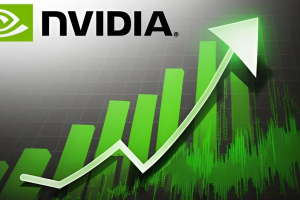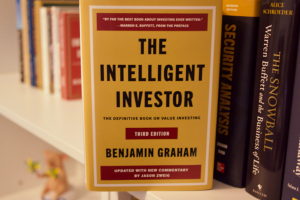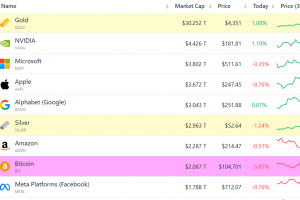In charts: the business education landscape in Asia-Pacific
Due to Asia-Pacific’s increasingly important political and economic role, many recruiters value candidates with expertise in the region. Business schools there can offer quality education with lower tuition fees than rival institutions in other locations while exposing graduates to a fast-growing market.
Though the US, the UK and Europe, remain popular destinations for study, Apac schools can also offer excellent experiences and provide a wide range of opportunities.
The FT business education rankings team has analysed survey responses gathered for the 2022 MBA, Masters in Management (MiM) and EMBA (2021) rankings to create a snapshot of the Asia-Pacific business school experience.
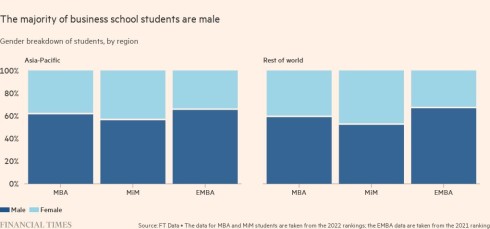
FT data show that business courses continue to be dominated by male students and the situation is no different at Asia-Pacific schools. On average, MBA and MiM programmes in this region have a larger gender disparity than those in other regions. But the proportion of female EMBA students in Asia-Pacific is in line with other regions.
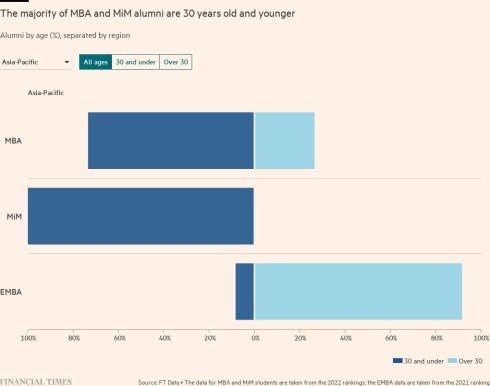
The average age of alumni for all courses is very similar when comparing Asia-Pacific with other regions. Due to MiM being a pre-experience course, most students are under-30 when starting the course. More than two-thirds of them are 23-years-old or younger at the start of their programme.
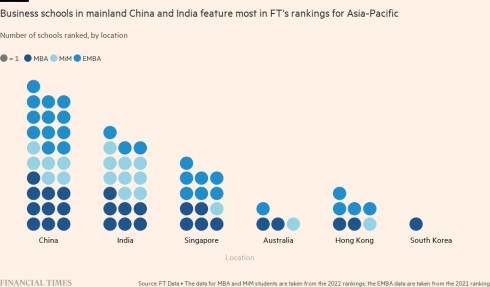
The majority of schools featured in the FT rankings have campuses in mainland China and India. In the EMBA 2021 ranking, schools with campuses in Singapore were also highly featured.
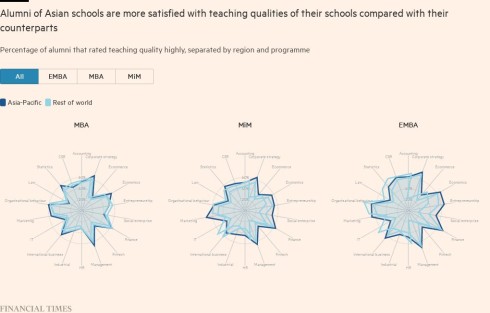
Asia-Pacific alumni rate their schools more highly than peers who studied in other regions.
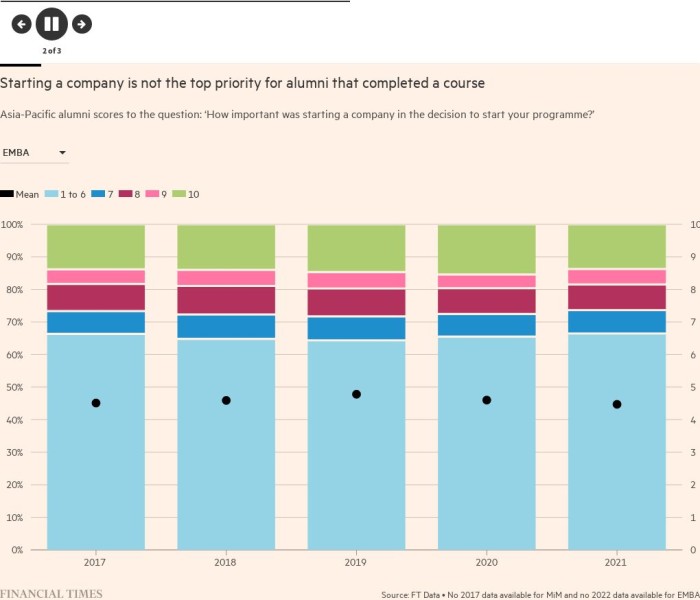
MBA and MiM programmes have a much lower percentage of alumni starting their own businesses — the proportion has dropped dramatically in the years since 2017.
Of all courses, EMBA programmes have the highest proportion of alumni starting their own businesses. With 27 per cent of alumni surveyed in 2021 starting their own business, the percentage doesn’t differ much between Asia-Pacific and the rest of the world.
The average rating given to this question “How important was starting a company in the decision to start your programme?” was no higher than five (out of 10) by EMBA alumni, despite having the highest proportion of entrepreneurs. The proportion that rated this motivation highly is less than the number that actually started a business. The average motivation ratings among MBA and MiM alumni are similar — but with fewer alumni rating this motivator highly.
The majority of MBA, MiM and EMBA alumni that started a business did so in Asia-Pacific, just under two-thirds of the businesses were started in the same region where alumni studied. Europe is the second most common destination to start a business for graduates from Asia-Pacific schools.
This story originally appeared on: Financial Times - Author:Leo Cremonezi


















